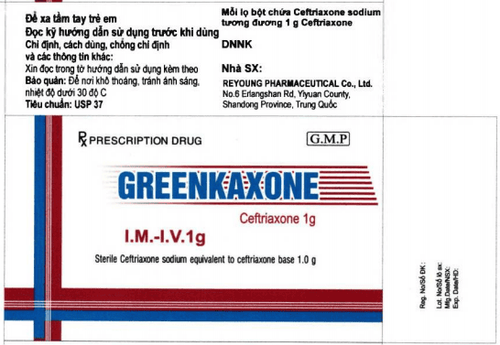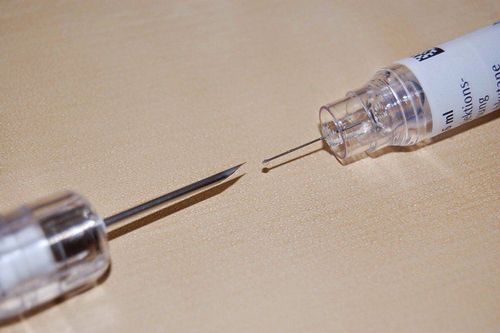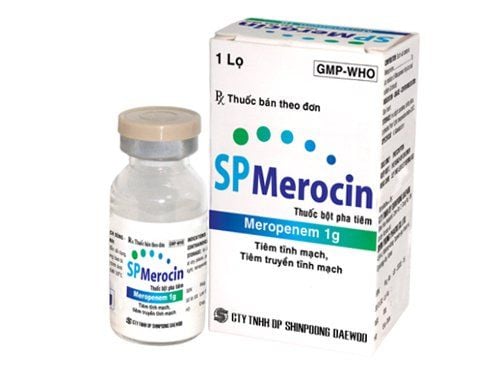This is an automatically translated article.
The article was professionally consulted with Specialist Doctor I Truong Nghia Binh - Specialist in Obstetrics - Obstetrics and Gynecology - Vinmec Da Nang International General Hospital.The ovaries are an important part of the female reproductive system. They produce hormones, such as estrogen and progesterone, which are two important hormones that make up a woman's menstrual cycle and release an egg for fertilization. There are many causes of ovarian pain, ranging from benign functional tumors to high-risk malignancies. Here are five common causes of ovarian pain.
1. What is pain in the ovaries?
The ovaries are located in the pelvis, so when you have ovarian pain, the pain usually occurs in the lower abdomen or pelvis. When you experience any pain in the lower abdomen or pelvis, you should see a doctor to determine the cause.Ovarian pain can be acute or chronic. Acute ovarian pain usually has a rapid onset (within minutes or days) and disappears shortly thereafter. Chronic ovarian pain usually comes on gradually and can last for several months or longer.
Ovarian pain can be intermittent or continuous. It may become worse with activity such as exercise or urination. Or just a little pain that's hard to notice and tolerable. Or ovarian pain can be so severe that it interferes with daily life.
The methods doctors use to diagnose ovarian pain will vary. The method of diagnosis will be based on what the suspected cause may be. Your doctor will ask about your medical history, pain onset, and physical exam. Questions may include:
Where are you feeling the pain? When does it start? Do you often feel pain? Is the pain more intense when you are active? How does the pain feel? Does the pain affect your daily life? Diagnostic tests, such as ultrasound and other imaging tests, may be ordered to find the cause of the pain.
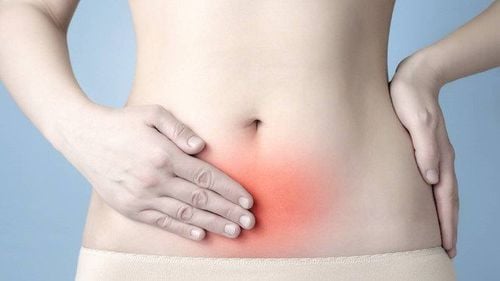
2. Causes of ovarian pain
2.1 Ovarian cyst 2.1.1. What is Ovarian cysts? Ovarian cysts are fluid-filled cysts that form in the ovaries. Ovarian cysts are quite common in women, especially of reproductive age. They are usually formed during ovulation. It can be caused by the failure of the follicle to release an egg or when the follicle does not regress after the egg is released. Ovarian cysts usually cause no symptoms and go away on their own. However, it can cause a dull ache or a sharp pain if the cyst is large and bursts.2.1.2. Other symptoms of ovarian cysts: Irregular menstrual cycles; Pain during intercourse or bowel movements; Nausea or vomiting; Feeling full after eating a small amount; Bloating. 2.1.3. How is an ovarian cyst diagnosed? Vaginal examination may reveal a pelvic mass. An ultrasound helps the doctor determine the size and location of the cyst. 2.1.4. Treatment of ovarian cysts Expected treatment means monitoring and not interfering with the cyst. Most ovarian cysts will go away on their own. If you don't have any unpleasant symptoms, especially if you're of childbearing age, your doctor will choose the treatment to expect. Instead, your doctor may check you periodically to see if there are any abnormal changes in your ovarian cysts. And only intervene when absolutely necessary or there are changes in the bad direction.
Laparoscopy . This is a form of surgery that uses a small camera and surgical instruments that are inserted into the abdomen through small incisions in the abdominal wall to remove the cyst. Some cystic tumors are large and some cases of suspected cancer require open surgery to remove the tumor and do pathology
Contraceptives . Birth control pills prevent ovulation and reduce the formation of new cysts.
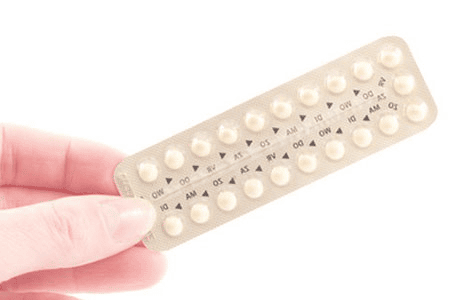
2.2.1. Other symptoms of an ovarian tumor Bloating or pressure in the abdomen; Stimulate urination; Undigested; Diarrhea or constipation; Loss of appetite / feeling of fullness; Weight loss. 2.2.2. How is an ovarian tumor diagnosed? Computed tomography (CT), magnetic resonance imaging (MRI) and positron emission tomography (PET-CT). These are advanced imaging methods that allow detailed images to be obtained to help doctors detect and assess the risk of malignancy of ovarian tumours.
CA-125 . This is a blood test that looks for a protein that tends to be higher in some ovarian cancers, however not all ovarian cancers show elevated CA-125 and conversely elevated CA-125 is not significant. have ovarian cancer. CA-125 is not effective and is not considered a screening test for ovarian cancer, but it can be used to evaluate and monitor treatment for ovarian cancer.
2.2.3. Treatment of Ovarian Tumors Laparotomy This is surgery done through an open incision into the abdomen. The surgeon will remove as much of the tumor as possible and preserve the surrounding healthy tissue. Such removal of tumor tissue is called surgical debulking. If the tumor is cancerous and has spread, the surgeon may also remove the ovaries, uterus, fallopian tubes, great omentum, and nearby lymph nodes. Laparoscopy and robotic surgery may also be used.
Chemotherapy Chemotherapy includes drugs that are given through a vein (IV), orally, or directly into the site of an injury. The drug kills both cancer cells and normal cells, so it can cause side effects such as nausea and vomiting, hair loss, kidney damage, and an increased risk of infection. These side effects will disappear after stopping treatment.
Radiation This treatment uses high-energy X-rays to kill or shrink cancer cells. Radiation is delivered from outside the body, or is placed inside the body near the site of the tumor. This treatment can also cause side effects, including skin inflammation, nausea, diarrhea, and fatigue. In ovarian cancer, radiation therapy is rarely used
2.3 Ovarian pain due to endometriosis Every month, the lining of the uterus is regenerated to prepare the embryo for implantation. However, when the egg is not fertilized, that endometrial layer is shed and removed from the body through menstruation. In some women, tissues such as the lining of the uterus can misplace and grow elsewhere in the body, causing endometriosis.
These tissues are affected by the hormonal hormones of the menstrual cycle so they can swell and bleed every month. However, because they have nowhere to be eliminated from the body, they can form scar tissue, causing severe pain.
2.3.1. Other symptoms of endometriosis Pain is cyclical; Pain during intercourse; Hypermenorrhea; Infertility ; Digestive disorders.
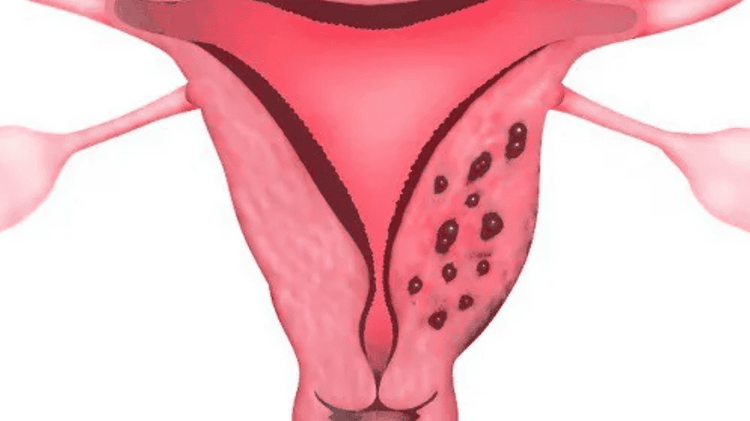
2.4.1. Other symptoms of pelvic inflammatory disease Pain during intercourse; Fever; Abnormal vaginal discharge; Irregular menstruation; Diarrhea; Vomit; Tired; Difficult urination. 2.4.2. How is pelvic inflammatory disease diagnosed? Gynecological exam: A vaginal exam will allow your doctor to detect lumps, abnormal discharge, or pain in the pelvic area. Blood and urine tests: These tests can help identify an infection by culturing abnormal vaginal discharge, or through blood and urine tests. Ultrasound: Ultrasound helps to evaluate the pelvis so the doctor can see if there are any abnormalities in the pelvic structures, to see if the infected mass has formed into a pocket of infection called an abscess. . Laparoscopy: In severe and difficult to determine cases, laparoscopy is necessary to confirm the diagnosis. 2.4.3. Treatment of appendicitis with antibiotics. These drugs can be taken orally or injected. Antibiotics kill the bacteria that cause PID. If you are taking antibiotics to treat PID, your sexual partner should also be treated. There is a high chance that a sexual partner may have a sexually transmitted infection.
2.5. Ovarian remnant syndrome Surgery to remove the uterus and ovaries is called hysterectomy and oophorectomy. An oophorectomy is a surgical removal of both the fallopian tubes and ovaries. In rare cases, a small piece of the ovary may be accidentally left behind. The rest can grow and develop cysts that cause pain in the patient.
2.5.1. Other symptoms of ovarian remnant syndrome Pain during intercourse Difficulty urinating 2.5.2. How is ovarian remnant syndrome diagnosed? Ultrasound, CT, and MRI help your doctor locate any remaining ovarian tissue.

To help customers detect and treat gynecological diseases early, Vinmec International General Hospital has a basic gynecological examination and screening package, helping customers detect early inflammatory diseases and help treat Easy, inexpensive treatment. Screening detects gynecological cancer (cervical cancer) early even when there are no symptoms.
Basic gynecological examination and screening package for female customers, has no age limit and may have the following symptoms:
Abnormal vaginal bleeding Having menstrual problems: irregular menstrual cycle, irregular menstrual cycle Irregular vaginal discharge (smell, different color) Vaginal pain and itching Female clients have several risk factors such as poor personal hygiene, Unsafe sex, abortion,... Female customers have other symptoms such as: Abnormal vaginal discharge, itching, pain in the private area, abnormal vaginal bleeding.
Please dial HOTLINE for more information or register for an appointment HERE. Download MyVinmec app to make appointments faster and to manage your bookings easily.
Reference source: webmd.com





